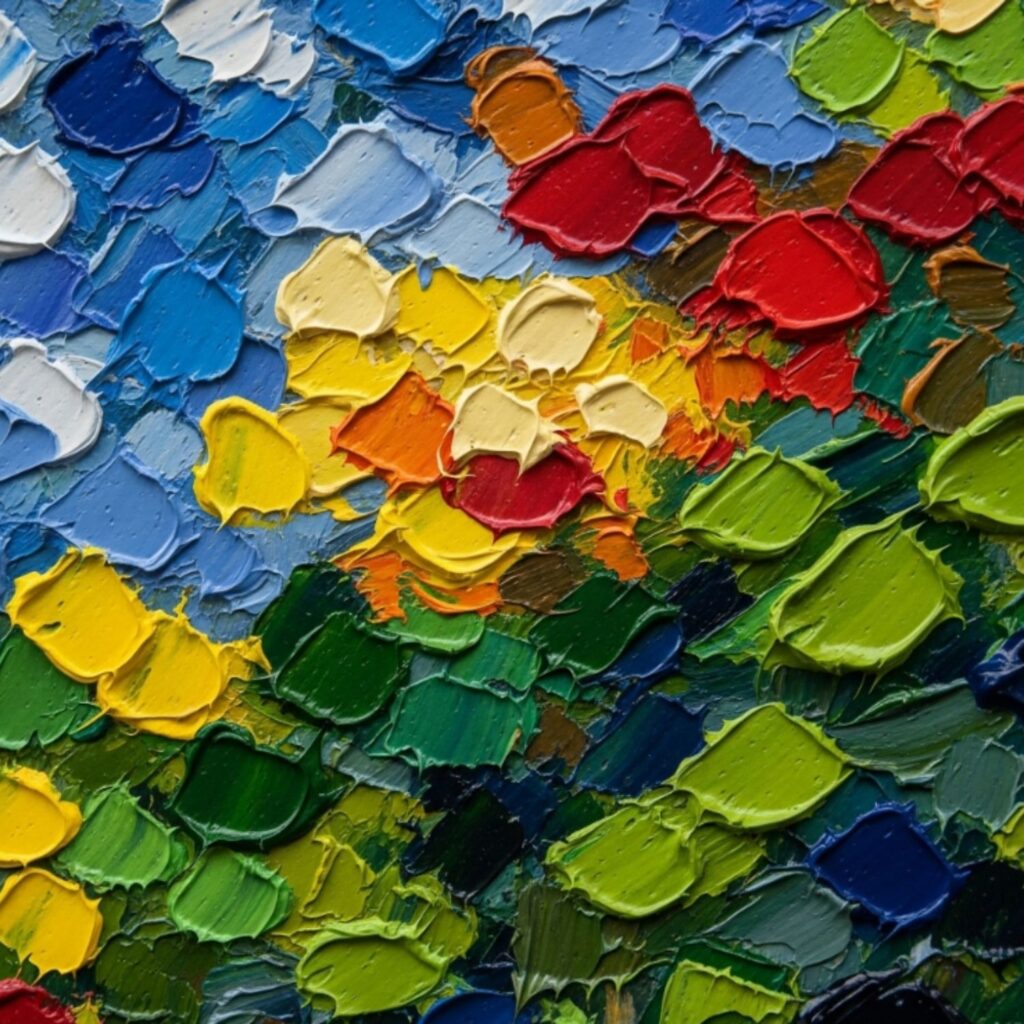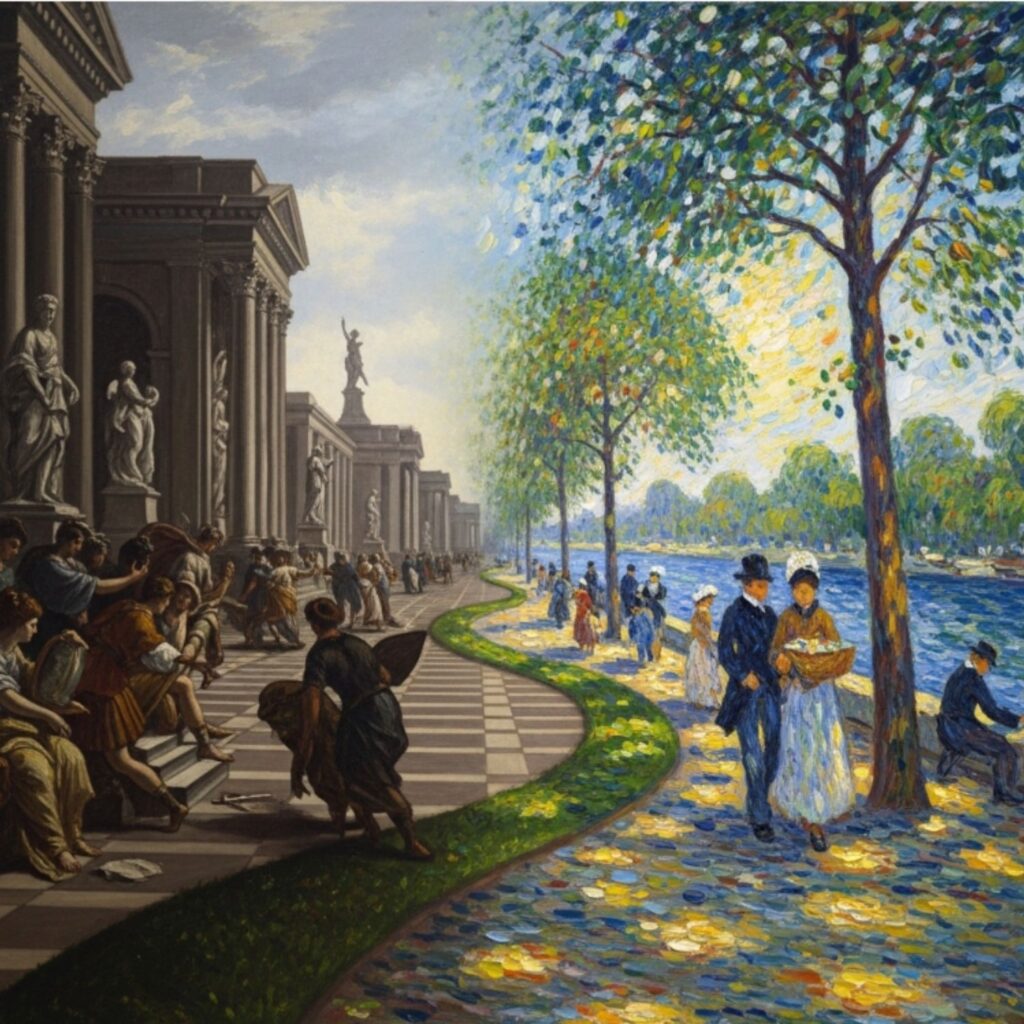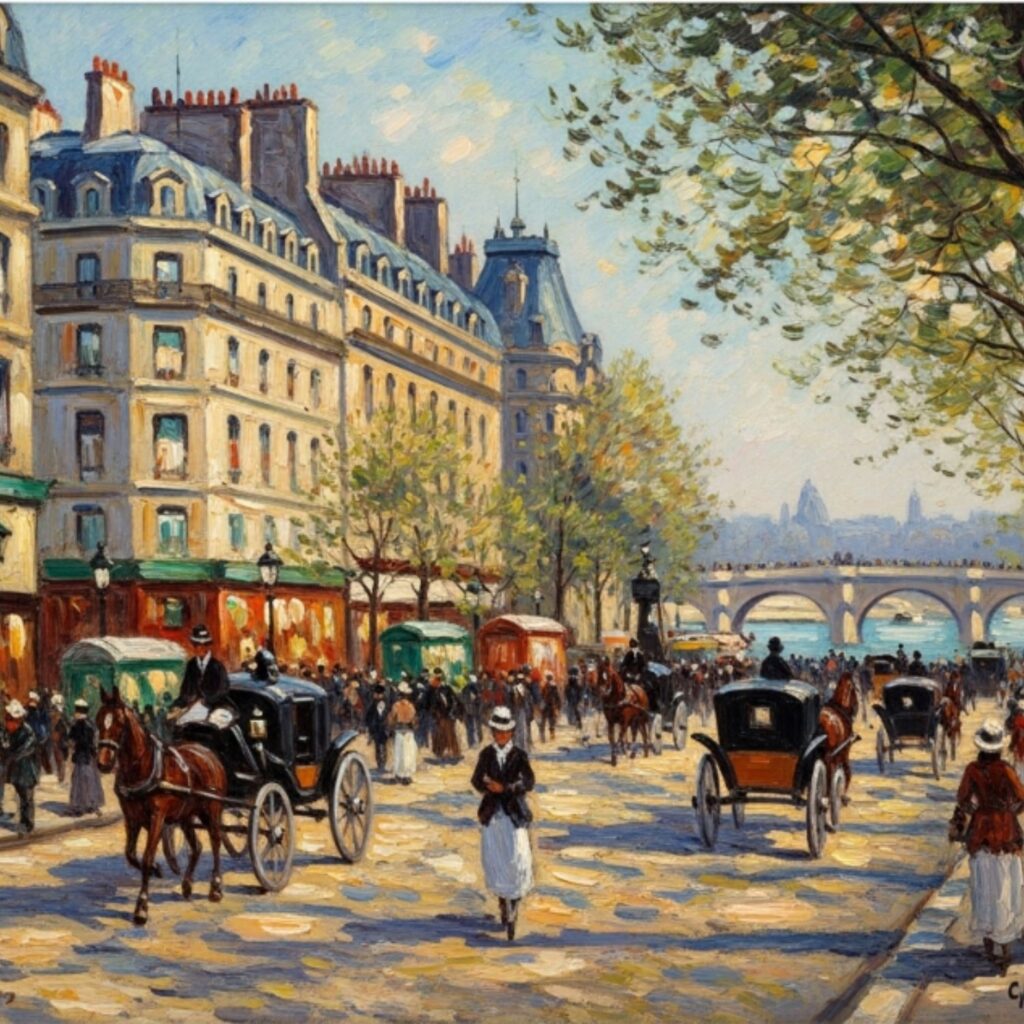
Have you ever wondered what makes an Impressionist painting feel so alive and vibrant? It’s not magic, but the result of a revolution in how these artists used color and light. Instead of following the strict color-mixing rules of the studio, the Impressionists stepped outdoors (en plein air) to directly observe and capture the marvelous transformations of the world under the sun. This article will reveal the unique painting techniques that help you “read” the secrets hidden within every brushstroke of Monet, Pissarro, or Morisot.

The birth of Impressionism in the latter half of the 19th century was not merely the emergence of a new art movement, but a true revolution in thought that shattered the rigid academic rules that had dominated European art for centuries. It was an arduous journey for a group of young artists who bravely went against the mainstream to capture the world as they perceived it, ushering in a completely new era for modern art.

Impressionism, one of the most significant and influential art movements in history, emerged in the 1870s in France. The name originated from Claude Monet’s famous painting, “Impression, soleil levant” (Impression, Sunrise), a work that was initially ridiculed by contemporary critics but later became the symbol of an entire era.




